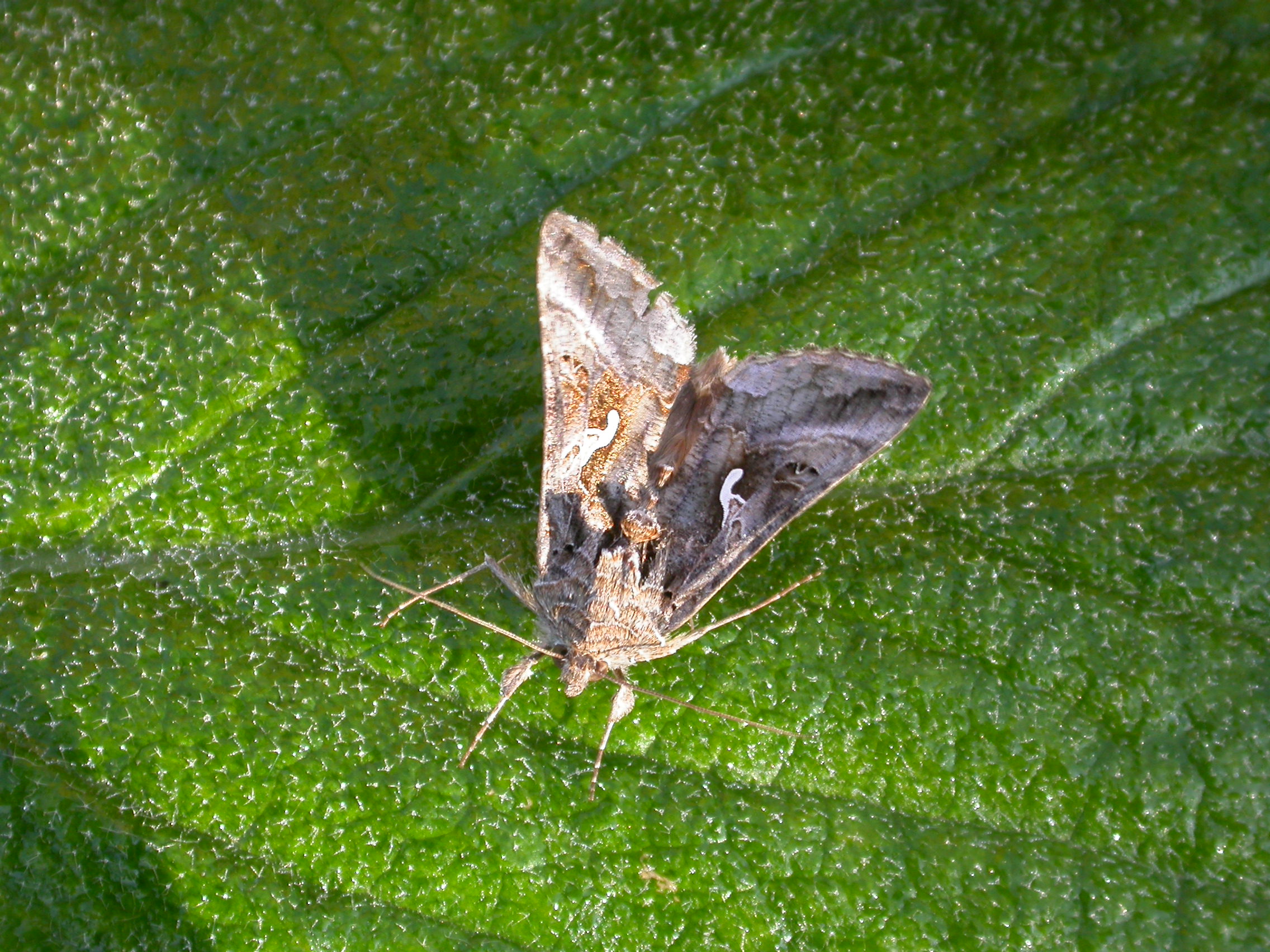Silver Y moth
Larvae of the silver Y moth (Autographa gamma) have a fairly wide range of host plants including beet, potato, maize, brassica, and legumes, but are particularly damaging to lettuce and related crops. The silver Y moth is a migrant species and infestations in the UK usually first arise as a result of immigration by moths in May and June.
The migration patterns of the silver Y moth have been studied in the UK in the context of increasing our understanding of insect migration activity (Chapman et al., 2012). Spring migrants use fast-moving airstreams, 200–1,000 m above the ground, to travel 300 km northward per night to colonize temporary summer-breeding grounds in northern Europe, from their winter-breeding grounds in North Africa and the Middle East. Radar tracking was used to estimate the annual abundance of immigrating moths during the period 2000–2009. Three years (2000, 2003, and 2006) had high immigrant migrations in spring, corresponding to an estimated 225–240 million adult moths immigrating into the whole of the UK, whereas in the other 7 years the UK received roughly one-ninth that number (10–40 million immigrants). Other outbreak years in the last hundred years have included 1946 and 1996 (documented by the Dorset Moth Group and others).
In the autumn (August and September), silver Y moths return to their winter breeding grounds and Chapman et al. (2012) estimated that 80% of emigrants reach regions in the Mediterranean Basin suitable for winter breeding. They also estimated that summer breeding in the UK results in a four-fold increase in the abundance of the subsequent generation of adults, all of which emigrate southward in the autumn. As a result they concluded that the persistence of this species is dependent on summer breeding in high-latitude regions such as the UK, because there is insufficient fresh vegetation to support them in the Mediterranean Basin during the summer months. The information used in the paper by Chapman et al. (2012) was obtained from the Rothamsted Insect Survey light trap network as well as by radar tracking.
Moth enthusiasts usually monitor silver Y moths using light traps, whilst pheromone traps are more practical for use by growers. The pheromone traps use synthetic female sex pheromone to attract male moths and the assumption is made that the female moths are laying eggs on host plants at the time that the male moths are captured. The precise timing of the arrival of silver Y moth in spring/summer appears to vary from year to year, as does the overall pattern of trap captures, although peaks in abundance, probably representing a new influx of immigrant moths, often occur at a similar time at locations within a region. Crops in the south and east seem to be most at risk from infestation.
It is possible to find silver Y moth eggs and larvae on plants during crop walking. However, the eggs are small and laid singly, and can be hard to find. The small larvae are green and are often relatively inconspicuous on foliage. One of the biggest problems with silver Y moth larvae and lettuce is that once the larvae are a bit bigger they start “burrowing” into the lettuce heads and can often get 2-3 leaves into the head of an iceberg lettuce.
Chapman JW, Bell JR, Burgin LE, Reynolds DR, Pettersson LB, Hill JK, Bonsall MB, Thomas JA (2012) Seasonal migration to high latitudes results in major reproductive benefits in an insect. Proceedings of the National Academy of Sciences 109(37):14924-14929

